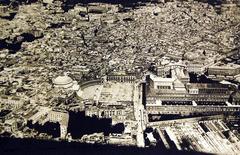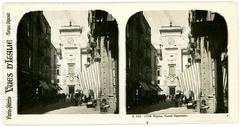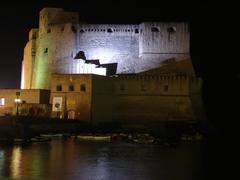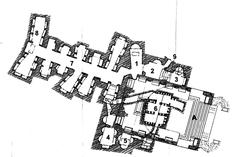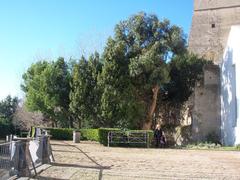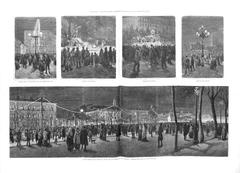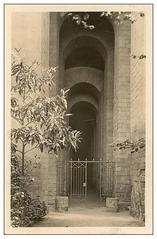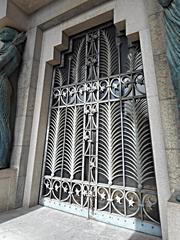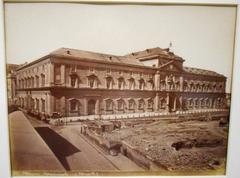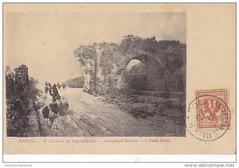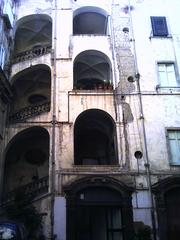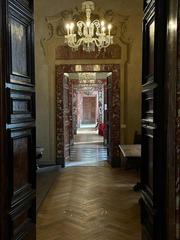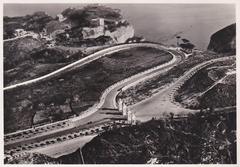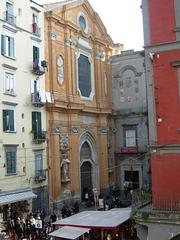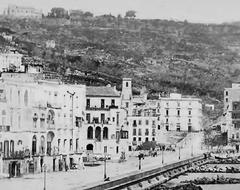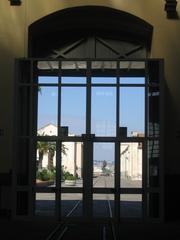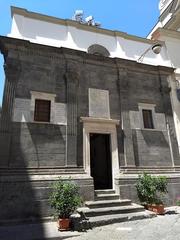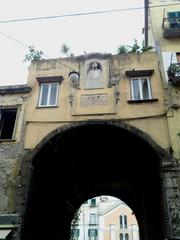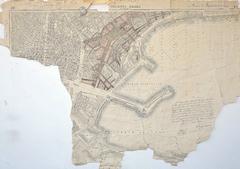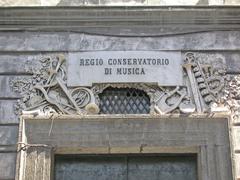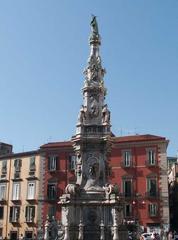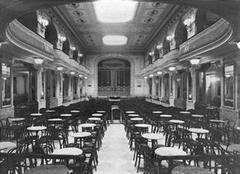
Visiting Piazza del Plebiscito: Hours, Tickets, and Tips
Date: 16/07/2024
Why Visit Piazza del Plebiscito
Welcome to the ultimate guide to visiting Piazza del Plebiscito, a monumental square located in the heart of Naples, Italy. This square is not only a testament to Naples’ rich history but also a vibrant hub of cultural and social activities. With its origins dating back to the early 19th century, Piazza del Plebiscito was initially conceived during the Napoleonic era and completed under Bourbon rule (Naples Tourism). Flanked by the Royal Palace of Naples and the Church of San Francesco di Paola, the square is a masterpiece of Neoclassical architecture (Italy Magazine). Over the years, Piazza del Plebiscito has served as a focal point for numerous historical events, including the pivotal plebiscite of 1860, which led to the unification of Italy (Encyclopedia Britannica). Today, it remains a vibrant space, hosting concerts, political rallies, and cultural festivals (Naples Events). Whether you’re a history buff, an architecture enthusiast, or simply planning your next trip to Naples, this comprehensive guide will provide you with all the information you need, from historical insights to practical visitor tips.
What You’ll Find in This Guide
- Introduction
- History of Piazza del Plebiscito
- Origins and Early History
- Architectural Significance
- Political and Social Significance
- The 1860 Plebiscite
- World War II
- Modern-Day Events
- Restoration and Preservation
- 20th Century Restoration Efforts
- 21st Century Developments
- Visitor Information
- Visiting Hours and Tickets
- Accessibility
- Nearby Attractions
- Travel Tips
- FAQ
- Conclusion
A Comprehensive Guide to Visiting Piazza del Plebiscito in Naples
Introduction
Welcome to the ultimate guide to Piazza del Plebiscito, one of Naples’ most iconic squares. This article will cover everything you need to know, from its rich history and architectural significance to practical visitor information like tickets, visiting hours, and nearby attractions. Whether you’re a history buff, an architecture enthusiast, or simply planning your next trip to Naples, this guide has something for everyone.
History of Piazza del Plebiscito
Origins and Early History
Piazza del Plebiscito, one of Naples’ most iconic squares, has a rich history that dates back to the early 19th century. Initially conceived during the Napoleonic era when Joachim Murat, Napoleon’s brother-in-law, ruled Naples, the construction began in 1809. However, the project was not completed until the Bourbon restoration under Ferdinand I of the Two Sicilies, who finished the square in 1816 (Naples Tourism).
Architectural Significance
The architectural layout of Piazza del Plebiscito is a testament to Neoclassical design. The square is flanked by two significant buildings: the Royal Palace of Naples and the Church of San Francesco di Paola. The Royal Palace, designed by Domenico Fontana, was initially constructed in the early 17th century but underwent several modifications over the centuries. The Church of San Francesco di Paola, with its grand portico and dome, was inspired by the Pantheon in Rome and completed in 1816 (Italy Magazine).
Political and Social Significance
Piazza del Plebiscito has been a focal point for numerous political and social events throughout its history. The square’s name itself commemorates the plebiscite of 1860, which resulted in the unification of the Kingdom of the Two Sicilies with the Kingdom of Sardinia, a crucial step towards the unification of Italy (History Today). Over the years, the square has hosted various public gatherings, protests, and celebrations, making it a symbol of civic life in Naples.
The 1860 Plebiscite
One of the most significant events in the history of Piazza del Plebiscito was the plebiscite of 1860. This vote was a critical moment in the Italian unification process, where the citizens of Naples and the surrounding regions voted overwhelmingly in favor of joining the Kingdom of Sardinia. The successful plebiscite marked the end of Bourbon rule and the beginning of a unified Italy (Encyclopedia Britannica).
World War II
During World War II, Naples and Piazza del Plebiscito experienced significant turmoil. The city was heavily bombed by Allied forces, and the square served as a gathering point for both military and civilian activities. After the war, the square became a symbol of resilience and recovery for the people of Naples (WWII History).
Modern-Day Events
In recent years, Piazza del Plebiscito has continued to be a central venue for major events. It has hosted concerts by international artists, political rallies, and cultural festivals. The square’s expansive open space makes it ideal for large gatherings, and it remains a vibrant part of Naples’ social and cultural life (Naples Events).
Restoration and Preservation
20th Century Restoration Efforts
Throughout the 20th century, Piazza del Plebiscito underwent several restoration projects aimed at preserving its historical and architectural integrity. These efforts included the restoration of the Royal Palace and the Church of San Francesco di Paola, as well as the refurbishment of the square’s pavement and surrounding structures. These projects were crucial in maintaining the square’s status as a historical landmark (Restoration Journal).
21st Century Developments
In the 21st century, further restoration and modernization efforts have been undertaken to enhance the square’s accessibility and functionality. These include the installation of modern lighting, improved pedestrian pathways, and the introduction of public art installations. These developments have helped to ensure that Piazza del Plebiscito remains a vibrant and accessible space for both locals and tourists (Modern Naples).
Visitor Information
Visiting Hours and Tickets
Piazza del Plebiscito is open 24 hours a day, seven days a week, and there is no admission fee to enter the square. However, some of the surrounding attractions, like the Royal Palace of Naples, may have specific visiting hours and ticket prices. It is advisable to check their official websites for the most up-to-date information.
Accessibility
The square is highly accessible, with smooth pavements and ramps for wheelchair users. Public transportation options, including buses and the metro, are readily available, making it easy to reach the square from different parts of Naples.
Nearby Attractions
Piazza del Plebiscito is surrounded by several other notable attractions worth visiting. These include the Teatro di San Carlo, one of the oldest and most prestigious opera houses in the world, and the Galleria Umberto I, a stunning shopping gallery with impressive architecture.
Travel Tips
- Best Time to Visit: The best time to visit Piazza del Plebiscito is during the spring and fall when the weather is mild, and the square is less crowded.
- Guided Tours: Consider joining a guided tour to gain deeper insights into the history and significance of the square and its surrounding attractions.
- Special Events: Check the local event calendar for any special events or festivals taking place in the square during your visit.
FAQ
Q: Is there an entrance fee for Piazza del Plebiscito?
A: No, the square itself is free to enter, but some surrounding attractions may have entrance fees.
Q: What are the visiting hours for Piazza del Plebiscito?
A: The square is open 24/7, but nearby attractions may have specific visiting hours.
Q: Is Piazza del Plebiscito wheelchair accessible?
A: Yes, the square is accessible with smooth pavements and ramps.
Q: What are some nearby attractions?
A: Teatro di San Carlo and Galleria Umberto I are both within walking distance.
Conclusion
Piazza del Plebiscito stands as a testament to Naples’ rich history and cultural heritage. From its origins in the Napoleonic era to its role in the unification of Italy and its continued significance in modern times, the square embodies the spirit and resilience of the city. Its architectural grandeur, historical importance, and vibrant cultural life make it a symbol of Naples’ enduring legacy.
For more updates and information on Naples’ historical sites, follow us on social media or download our mobile app Audiala. Don’t forget to check out our related posts for more travel tips and guides.
Sources and Further Reading
- Naples Tourism. Piazza del Plebiscito. https://www.naples-tourism.com
- Italy Magazine. Piazza del Plebiscito. https://www.italymagazine.com
- History Today. Piazza del Plebiscito. https://www.historytoday.com
- Encyclopedia Britannica. Plebiscite of 1860. https://www.britannica.com
- WWII History. Piazza del Plebiscito during World War II. https://www.wwiihistory.com
- Naples Events. Modern-Day Events in Piazza del Plebiscito. https://www.naples-events.com
- Restoration Journal. 20th Century Restoration Efforts of Piazza del Plebiscito. https://www.restorationjournal.com
- Modern Naples. 21st Century Developments of Piazza del Plebiscito. https://www.modernnaples.com

